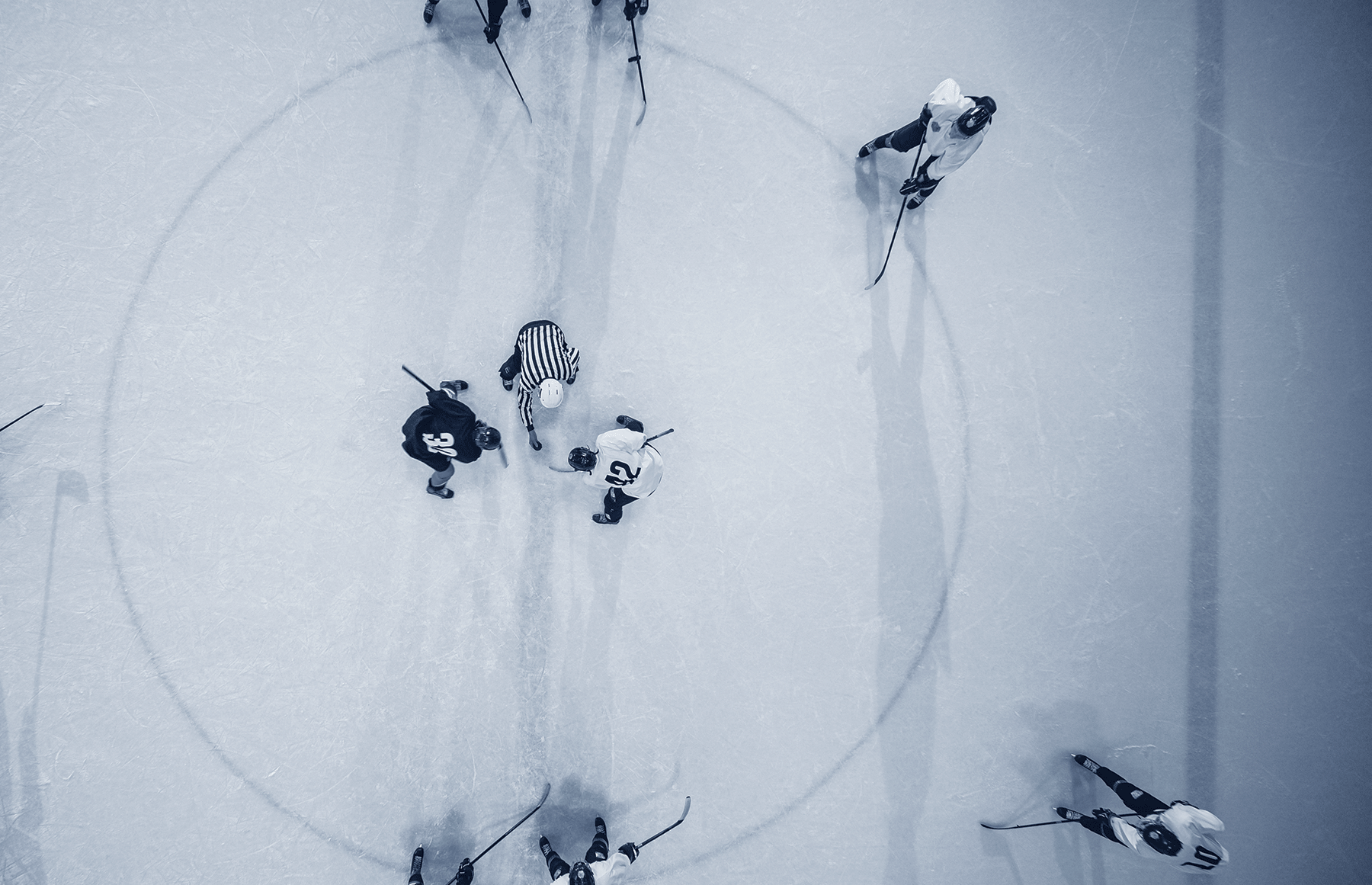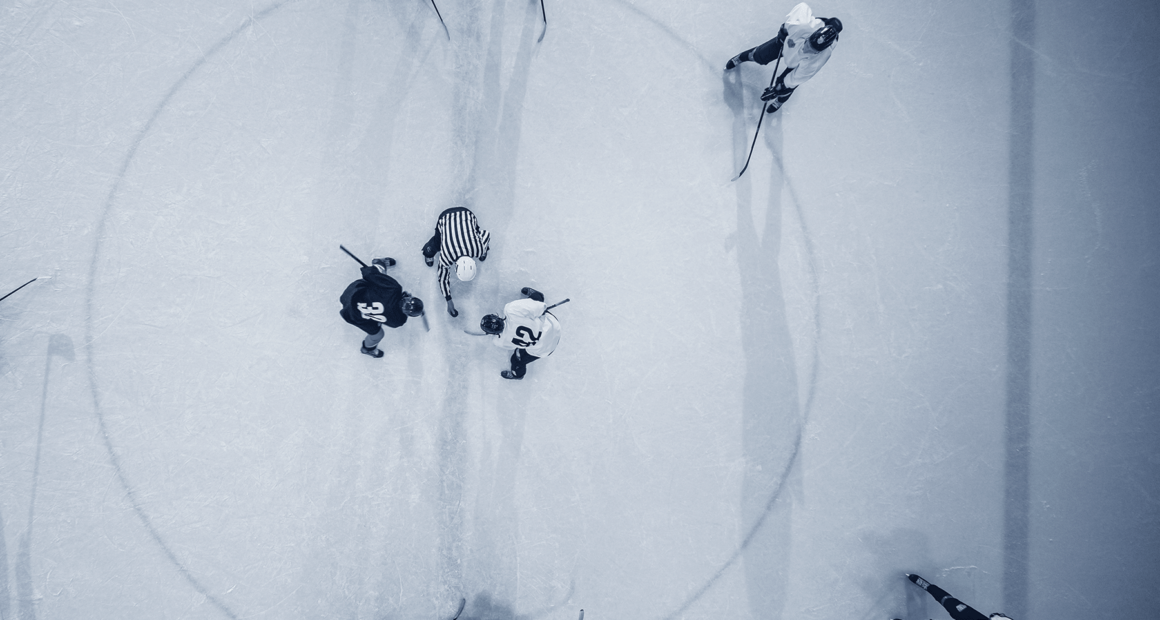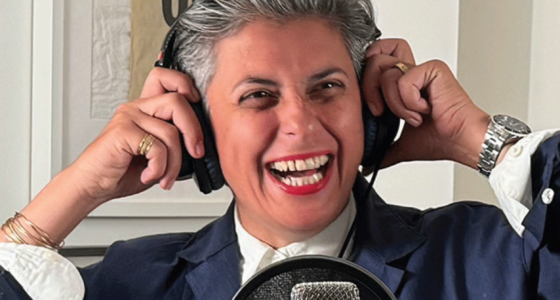Sports journalism used to be the “toy department.” Now it’s an investigative unit

Photo courtesy iStock
Lit by clinical overhead lights, Hockey Canada president and CEO Scott Smith is flanked by a lawyer to his right and colleague Brian Cairo to his left. Leaders of Hockey Canada and its members sit at the long wooden table. It is an image of uniformity—seven white men, several with greying hair, wearing suits in shades of navy blue and black. Seven glasses of water sweat before them as they face a room of members of Parliament eager to question them about a statement of claim filed in a court in London, Ontario. The document detailed a sexual assault by members of the 2018 Canadian men’s World Junior hockey team, and came to the attention of Rick Westhead, a senior sports reporter for The Sports Network, who broke the story back in May 2022.
Because Westhead got the tip in Serbia while working on a profile of Canadian World Cup soccer player Milan Borjan, he had to find a court clerk in Ontario to obtain the statement of claim from the London courthouse, who then sent him its contents so he could start checking out the case while he was abroad. Then he got to work.
The tipster warned Westhead that when the story broke it would “rock the hockey world”—and it did. The federal government froze Hockey Canada’s funding. Reporting from Grant Robertson of The Globe and Mail revealed that some of the fees that hockey parents were paying to enrol their kids in the sport were funding uninsured sexual assault claims. Major sponsors such as Tim Hortons, Swiss Chalet, Telus, and Scotiabank pulled their support for the organization for the 2022–23 hockey season. Others, such as Canadian Tire, severed the relationship altogether.
Some provincial hockey organizations reconsidered or rescinded their membership, holding back registration fees from Hockey Canada. Months after the hearing in Ottawa, Scott Smith and the entire Hockey Canada board of directors would step down to make room for a new slate of leadership in the wake of how this case was handled, despite paying crisis management firm Navigator $1.6 million for guidance on how to manage the crisis. A 213-page independent governance review by former Supreme Court Justice Thomas Cromwell, released in November 2022, would reiterate the work of the journalists investigating the organization—despite Hockey Canada having suggested in a survey that the media had “overblown” the organization’s mishandling of the sexual assault allegations.
But before all that, Smith sits here, in Parliament, on a Wednesday in July. As New Democratic Party MP Peter Julian moves on from his question about allegations against a past group of World Junior athletes—this time detailing an assault by the 2003 team in Halifax—Smith interjects. “I really want to confirm,” he says, “the Hockey Canada staff was made aware Thursday evening, when we received Mr. Westhead’s email, of the details of those allegations of the 2003 world junior team.”
Westhead has been a central character in this saga as well as other abuse and sexual assault cases in Canadian sport that have come to the fore in recent years. He and investigative sports reporters Katie Strang, Laura Robinson, and Robertson have been leading the pack, prying and diving deep into allegations against Hockey Canada and other sports organizations to reveal important truths that the public needs to know.
This moment in Parliament (and the hearings and repercussions that will follow) signifies something bigger than willful ignorance on the part of Hockey Canada. It depicts an intersection of sports, journalism, and politics in a literal way. Sports are political—always have been—and sports journalists have important stories to tell. Though it has traditionally suffered a poor reputation from critics and journalistic peers as the “toy department” of journalism, that image may be getting a makeover. Shifts in the media ecosystem, audience engagement, and the political moment journalists are operating in have created a new view of the sports media industry and a renewed appetite for accountability and transparency-style journalism in sports.
Building the Sandbox
In print journalism, topic and coverage areas are typically defined by set departments. Business reporters cover Bay Street and the banks, for example, while political journalists are generally assigned to Parliament Hill or the provincial legislature. Within this structure, there is a hierarchy. Any amount of time spent reading academic literature on the topic will provide a clear picture, whether explicitly or implicitly: Sports journalism, in the eyes of some journalists, lies near the bottom of the pecking order.
While sports journalism has been called “a department focused on frivolity and continuous promotion rather than being a serious part of the fourth estate” by one academic who studies it, the same journalists who roll their eyes at their sportswriter colleagues must also admit it has been a vital economic engine for many publications. Sports affect more than just their fans. They are a way to relate to others, something to talk about at the watercooler. It’s a common language across socioeconomic strata. To ignore that is to dismiss large numbers of readers and paying subscribers in a journalism industry that is quickly shrinking and losing money.
Sports journalists are not entirely blameless for this reputation, though. Historically, as reporters developed beats, they had to ingratiate themselves to the teams they were covering to gain access to information no one else had. They relied on good relationships with media managers to reach athletes and tell exclusive stories. In return, teams accepted the occasional tough question because they relied on journalists for exposure and publicity. As more people entered the space, thanks to the proliferation of blogging culture, the line between journalist and fan became blurred, and some were there to stand next to their favourite athletes, their heroes. Accountability became less of a focus than actions on the field.
Add to that recent shifts in the media landscape that have disturbed the equilibrium between sports reporters and their sources. Now, athletes and teams have a tighter grip on the narrative. Athletes, owners, managers, and the teams themselves have Twitter and Instagram accounts. Some sports organizations even have their own media channels, which let the organizations carefully control what the media see and hear. Although there is still some value in access-based reporting, Morgan Campbell, a senior sports correspondent with CBC, says, “If your job is just to share scores, the internet has already scooped you.” Today, sharing game stats is not the vital source of information and access for fans—nor the necessary hurdle on the way to publicity for teams—that it once was.
Recent entrants into the sports journalism space such as The Athletic have introduced a funding and storytelling format that combines sports with long-form, contextualized articles, and subscriber-only content. Mediums such as podcasts, blogs, and self-publication mean that sports coverage is being rapidly democratized. While these shifts threaten more traditional forms of sports reporting, they also mean that more perspectives and more kinds of stories can be told. Ideally, this makes way for sports stories about the athletes themselves and the powerful people behind the games, including turning a critical eye toward the sports establishment itself.
The cherry on top of the changing media environment is the pandemic, which led to the cancellation of sporting events at an unprecedented scale. Sports reporters were no longer able to rely on games for content. Even when games resumed, some reporters were not permitted to enter arenas or were granted much less access to field level and locker room areas. Losing access to their sources meant many reporters had to adjust, writing stories about health and safety in sport, digging further to find more background for their stories and reflecting not just slices of time or games and playoffs reports, but the broader context from which the story was being told.
People care about the results of games, and reporters who recap games and provide play-by-plays are important, but that alone won’t cut it anymore. In Canada, reporters like Donnovan Bennett at Sportsnet, and Campbell and Shireen Ahmed at CBC and are pointing out inequities in sports, abuses by and of athletes, and critiquing the way sports are covered. They are finding audiences because sports don’t happen in a vacuum. “There is a greater understanding now, with both the media and consumers of sports media,” says Katie Strang, who works for The Athletic, “that writing about sports and athletes in a very narrow context is no longer sufficient.”
This is the arena that investigative reporters in sports find themselves working in today. Of course, investigative journalism in sports is not new. “Where there’s sports, there’s money, where there’s money, there’s scandals,” says Campbell. He points to investigations into sports dating back to the 1970s. Sports represent billions of dollars of investment, both personal and taxpayer dollars. Campbell notes big stories about steroid use following the Ben Johnson scandal at the 1988 Olympics, or the Barry Bonds performance-enhancing-drugs years in baseball in the early 2000s. He mentions Westhead’s own “follow the money” stories about Canada Soccer making players return their sweats to the team while buying custom suits for the board.
All the stories Campbell mentions have found audiences and demonstrated that investigations in sports are valuable. But with Hockey Canada, there are two important pieces that have contributed to this story’s reach: the game and the country. The sport is part of the national identity and many everyday Canadians’ lives. It receives huge amounts of coverage and funding compared to other sports.
Westhead is not the only one following the money. In July 2022, the Globe’s Grant Robertson broke the story of the National Equity Fund, a stash of money saved by Hockey Canada from children’s hockey registration fees across the country to pay for uninsured claims, including sexual assaults. But Robertson, and later the Cromwell report, would find that the organization had little transparency about the way the funds were used. As a sometimes-business, sometimes-sports, always-investigative journalist, Robertson says “investigative reporting starts when people aren’t talking.” That philosophy brings him to the sports world—often.
He has won two National Newspaper Awards for sports writing, and his investigation into eating disorders among Olympians made him a finalist for a Michener Award. More recently, Scott Smith’s dodging of financial questions at the first Hockey Canada parliamentary hearing in June was what piqued his interest. “Sometimes you do an investigation, and it takes time for it to resonate,” says Robertson. “With this one, people got it quickly.”
Robertson echoes the sentiment that audiences and athletes are ready to engage with these kinds of sports stories more meaningfully. “The reason these problems are coming forward is that there’s been a realization that sports, like society, needs to be viewed more critically.”
The hard work of accountability-oriented investigators means people from sports fans to the federal government are paying attention to inequities, toxic culture, and abuses of power in sport. With investigations ongoing in multiple sporting organizations in Canada, including Boxing Canada, GymCan, and Rowing Canada, sports journalists are keeping a close eye on the sports world, investigating and uncovering the stories these organizations have tried to keep behind closed doors for so long.
For the Love of Sports
“We want to look at sports as if it’s an escape, and that’s okay….You want to just watch the game with your friends and your family. Because we love hockey.”
As Westhead says this, I’m taken back to the 2010 Winter Olympics, specifically February 28. Though it’s midday in Vancouver, in Halifax, where I am, it’s dark outside. My sister, dad, brother, mom, and I are in the living room. We’re watching the TV screen closely, but tentatively. It’s like if I relax my muscles, the team on screen will also let down its guard. I couldn’t take that chance, not during the hockey gold-medal finals against the United States.
The Americans had come back from a 2–0 deficit earlier in the game to tie and force overtime. A few minutes in, Sidney Crosby rushes up the ice on a breakaway. He’s thwarted by the U.S. defence and forced onto the boards. He passes to his teammate, Jarome Iginla. Iginla passes back to Crosby, who—now in front of the net—sneaks the shot through the legs of U.S. goalie Ryan Miller. We explode.
We’re jumping and laughing and run into the street, in too much of a celebratory rush to worry about our jackets, despite the February weather. Outside, we find our neighbours doing the same. As many as 10 kids (and a few adults) are running around the block cheering with homemade signs, and before long, we’re setting up nets in the street and playing road hockey in honour of the game, seeing clouds of our own breath in the chill, and lit only by the streetlights and porch lights of our homes.
Back at the café where Westhead and I are chatting this sunny, late-September morning, he continues, “You don’t want to think about sexual assaults, concussions and CTE, or racial and gender inequality. I get it. But these are multibillion-dollar industries. That scrutiny is going to come the same way it’s come for so many other sectors.”
For all the road hockey games that were played after the Olympic gold medal was won in 2010, there are valid criticisms. Stadium developments for the Vancouver Olympics displaced low-income housing. At its worst, the Olympics can foster nationalism among its fans that further widens divides among nations. The International Olympic Committee has its own history of corruption. And now, I can’t help but ask myself if any of the people on the 2010 gold-medal team were involved in the events in a hotel room in Halifax in 2003.
Laura Robinson, a former member of the national cycling team, has been a pioneer in this area, covering stories of sexual assault and institutional abuse in sport—hockey, especially—for Canadian news outlets such as the Globe, the Toronto Star, Now magazine, and The Georgia Strait since 1992. She wants athletes to be met with safety and joy akin to what she experiences when she’s cycling or cross-country skiing. “I know how fantastic it feels when you’re doing your sport that you love.”
Looking Back, Moving Forward
In covering these sexual assault sports stories for more than 30 years, Robinson may seem like the canary in the coal mine. One of the early cases she covered involved a man named Graham James. James was a name that people in the small city of Swift Current, Saskatchewan might recognize. His position as coach of the local Western Hockey League team, the Swift Current Broncos, meant those odds went up considerably. In 1986, the team had been in a serious bus crash that claimed the lives of four players, causing an outpouring of grief and sympathy from the public. Through it all, James acted like an upstanding citizen, winning The Hockey News’s Man of the Year award in 1989. “This was a guy,” Westhead says, “when he coached, demanded that his team not be sponsored by a beer company like every other team was.” Instead, James made milk the Broncos’ official drink. But behind his public moves, he was also a serial abuser.
In 1997, James plead guilty to 350 counts of sexual assault—the man used his power and influence to lure and assault teenage players. Total compensation for James’s victims came to $6.8 million, more than 75 percent of the total $8.9 million Hockey Canada has paid in settlements for claims of abuse since 1989.
Westhead recalls that the Graham James story was international news when he was first charged in 1996. He says this case—like the 2018 Hockey Canada case that would come more than 20 years later—became front-page “hard news.” The public was outraged. “People said never again—we have to make changes so this never happens again,” Westhead remembers. “And what happened? The story cycle changed. People focused on something different. And all of a sudden, we forgot about it.”
But Robinson never forgot about it. She gave the story sustained attention and continued to cover abuse in sports. In her 1998 book Crossing the Line: Violence and Sexual Assault in Canada’s National Sport, she wrote about the cycle of violence and abuse that permeated junior hockey in the country. That is, those who are abused often enact that abuse on others. When the cycle takes place behind closed doors—through hazing, say, or under the guise of “tradition” or “team bonding”—it also creates a system of secretive and institutionalized sexual violence, a system that is now a part of Canadian hockey organizations.
While Westhead said it’s possible the media may move on from this latest Hockey Canada scandal, money talks. Sponsors pulled their support from Hockey Canada so quickly it went nuclear and dumped their entire board and leadership. NHLers such as Sheldon Kennedy and Theo Fleury, victims of James both, have come forward and are talking about their experiences and advocating for victims of sexual violence.
“If the Graham James case had happened in this day and age, a lot would be different,” says Katie Strang. “We’d see a lot more sensitivity to survivors. We’d see more consequences, not just for Graham James, but also the organizations that hire him, and members of associations that have some inkling of what’s going on. And there’d be probably more scrutiny on the legal system.”
Strang started her career at Newsday before moving to ESPN, where she covered the sport-crime beat. She then moved over to The Athletic, where she made her first full-fledged foray into investigative journalism by covering the Larry Nassar serial abuse revelations. The investigative team at the daily Indianapolis Star broke the story. The reporters found that Nassar, the team physician for the U.S. women’s gymnastics team, had been sexually abusing two young female gymnasts who came to him for medical treatment. Later, it would be found the number of gymnasts violated by Nassar was in the hundreds, including high-profile U.S. world champion and Olympic gold medalist Simone Biles. The story hit close to home for Strang. “I live in Michigan. I went to Michigan State. I was a competitive gymnast growing up. My coach went to jail for sexual misconduct. It just checked a lot of boxes for me.” Strang says the case had a profound impact on her view of sexual abuse in sport: “It just really rocked me how pervasive abuse is in sports, how under-covered it is, how underappreciated the institutional element is.”
Robinson adds that the gymnasts in the Nassar case played a major role in shifting the coverage of abuse and sport. “They showed the level of institutional complicity that is necessary for a predator to thrive.”
In so many cases, these stories have been treated as isolated moments, or cases of individual bad actors. In 1993, Laura Robinson was working with CBC’s The Fifth Estate and “that entire season could have just been about the amount of sexual abuse in sport.” She remembers how senior decision-makers in the sports organizations she covered dismissed her work. “They didn’t even say sexual harassment,” Robinson says. “They decriminalized and trivialized it. That was intentional. And that speaks to the deep, deep level of institutional complicity in sport.”
Today, thanks in part to the U.S. gymnasts, the conversation appears to have changed. Cultural milestones like the #MeToo movement, which started in the entertainment industry, gave survivors of sexual violence an opportunity to speak up about their experience and receive a level of credibility they had not gotten before. It also showed the extent to which systems would protect powerful people from scrutiny or accountability. “[Sports] are a microcosm of society,” says Strang. “All of the social issues that impact communities—and people on an individual level—are happening in sports.” She believes courage is contagious. Though it was a challenging story to cover, working on the Nassar case showed her “the power of athletes and survivors using their voice for power and solidarity and community.”
There is no better recent example than what happens in October 2021, when Westhead invites Kyle Beach, a one-time NHL draft pick, on to TSN’s SportsCentre for an interview to speak about his experience of being abused by Chicago Blackhawks video coach Brad Aldrich. In the approximately 30-minute interview, Beach openly shares and reopens emotional scars. In one particularly raw moment, Westhead asks Beach what he would say to another victim, a 16-year-old boy who says that, after leaving the Blackhawks organization, Aldrich assaulted him. At this, Beach’s baritone voice, shaky throughout the interview, finally cracks as he breaks down. Through tears, he apologizes to the teenager he’s never met for not speaking out sooner. But Beach, like many other players, is speaking out now.
Before they sign off, Beach recovers and addresses Westhead directly. “When nobody else would touch this, not the big million-follower insiders, not the NHL, you kept grinding. So, thank you,” he says. As Beach speaks, Westhead flashes in and out of smiles, starts blinking quickly and bowing his head away from the camera in a nearly successful attempt to hold back his own emotions.
Hours after the interview aired, Westhead says people started reaching out to tell him their stories. “Some people just wanted it to be kept private, and just wanted to share it,” he says. “Other people were wanting to find accountability in a more public way.” His inbox continues to overflow with messages that he combs through most mornings. “How great is it that people feel empowered to come forward now?” he says. “It makes me feel good that I’m considered worthy of that trust.”
Out of the Sandbox
For some daily sports writers and team beat reporters, gaining access is imperative for being able to do their jobs. This means long-term investigations are not always possible. CBC’s Morgan Campbell says that there is space for both. “A lot of places had to learn the hard way. The person who is good at doing the game stories and writing about trades isn’t always as good at writing about the sensitive, politically fraught issues.”
Creating space for critical sports journalism is imperative. Campbell says that before the introduction of legalized betting in sports—which has started to shift funding and journalistic focus away from more contextualized stories—he was seeing encouraging changes. “It was refreshing to see sports departments that had budgets and rosters really start to take these off-the-field stories into account.”
By reporting on and investigating the way power and money operate in sport, Campbell continues, audiences get exposure to stories about pervasive sexual violence or the opioid crisis. Even things like cryptocurrency, after regularly seeing the sponsorships emblazoned across athletes’ jerseys in recent years.
Journalists like Campbell and Shireen Ahmed at the CBC also amplify the work of investigators by commenting on or directing their audiences to these stories. In the Hockey Canada example, Ahmed has regularly referred students, followers, and podcast listeners to the work of her friends and colleagues Strang and Westhead, calling them “the Federer and Nadal of investigative sports journalism.”
“They Know We’re Watching”
Strang calls Westhead a “fierce competitor and also a dear friend.” Their supportive friendship—and healthy rivalry—reveals something else that makes the Hockey Canada story unusual. The tenacious investigative reporting seems collaborative. “That, to me, is what feels different,” says the Globe’s Grant Robertson. He points to Westhead’s work in obtaining the original statement of claim from court documents. Then to the moment-by-moment timeline of the events in London that Strang created, and his own work pulling apart the financial accounts. “Those are three separate things.” What’s more, the major players have praised each other’s great work on this case.
Laura Robinson herself says she is optimistic about the change journalism has encouraged in the Hockey Canada case. The parliamentary hearings, the national attention, and the increased consistent scrutiny on national sports organizations are the result of reporting and are major improvements from when she started doing the work. But there’s still more to do. “We’re at the most critical place we’ve ever been,” she says. “Good investigative journalism is what is going to change this.”
Strang doesn’t do this work to achieve specific outcomes. “These institutions know that we’re watching,” she says, “and that we’re not going anywhere. They can at least expect to be held accountable for their actions because we will be following them.”
Early in the morning on October 4, 2022, Westhead got on a plane to Ottawa to attend the third of four Hockey Canada hearings. Hockey Canada board chair Andrea Skinner, who participated in the meeting via video call, maintained the media had “fundamentally misdescribed” how money was used to settle claims, and stood behind the organization’s embattled CEO and president, Scott Smith. Meanwhile, Westhead sat among MPs, live-tweeting the Hockey Canada officials’ thinly veiled accusations against his own reporting. By one in the afternoon, he left the Twitter coverage to Strang, who was tuning in via the livestream. Westhead boarded another plane, this one back to Toronto, to participate in a Canadian Journalism Foundation (CJF) panel about sexual abuse allegations in organized sport, alongside Strang, later that evening.
Telling these stories isn’t easy. They require care, sensitivity, and airtight accuracy. There are some days of tears and frustration and calls to friends and family for support. At the CJF panel that night, Strang joked that her therapist “against her will, knows about every sports scandal that spans our site.”
In early October, in a tweet, Westhead related his experience at a Starbucks that morning. He was waiting in line for a coffee when a woman standing behind him said his name. He turned around, but it wasn’t someone he recognized. After a brief introduction, the woman explained that her daughter had wanted to connect with him, but she was waiting for a national sports organization to release her from an NDA.
These stories follow Westhead and others because as sports reporters and investigators continue to demonstrate their trustworthiness and commitment to the stories they are telling, more people are coming forward. DMs, email inboxes, and even physical mailboxes, in Robinson’s experience, are filled with courageous accounts from people who want to love their sport again, and who want to make sports safer for those who will come after them.
About the author
Carly Penrose is a second-year Master of Journalism student at Toronto Metropolitan University. She is from Halifax, Nova Scotia and did her undergraduate degree in psychology at Mount Allison University in New Brunswick. Carly likes to understand how and why people think and act the way they do. She has bylines in the National Post, and THIS Magazine, and currently works with Pagemasters North America. She loves animals, comedy and long walks with podcasts.









